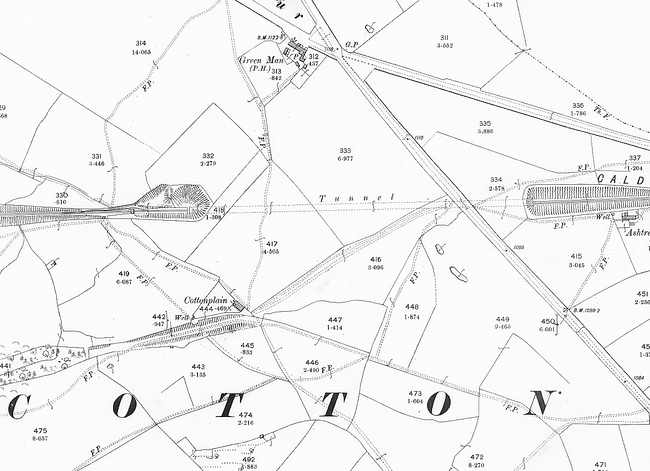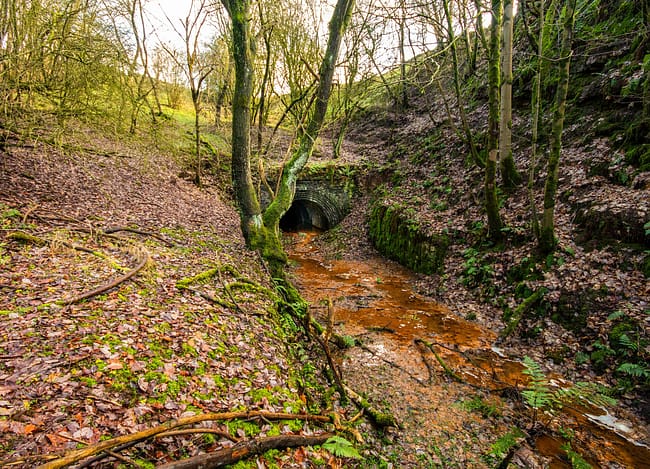A Brief History
James Trubshaw (13 February 1777- 28th October 1853) was Engineer to the Trent and Mersey Canal Ltd and Designer of the 4th tram road. The tram road consisted of a series of self-acting inclines leading from Froghall Wharf to the quarries at Caldon Lowe a distance of approximately 3 miles. In order to keep the gradient more or less constant substantial embankments and cuttings were constructed. The final section, leading to the quarries included a tunnel.The line carried its first traffic in July 1847, having been completed by the North Staffordshire Railway following its acquisition of the Trent & Mersey Canal six months earlier.
The line, using a 3-foot 6-inch gauge, involved substantial earthworks and a series of self- acting inclines for which a three-rail system was adopted (except at the passing loops) where the centre rail was shared by both tracks. Also needed was a tunnel of around 480 yards close to the line’s summit approaching Caldon Low quarry. The first brick was laid by Trubshaw on the 17th April 1844, with the full tramway opening in 1847.Trubshaws tramroad – and the tunnel – closed in 1920; limestone destined for the canal was carried thereafter from Caldon Low via the 1905 standard gauge route to a new basin near Endon.

The Tunnel Today
Measuring 301 meters in length, the first brick was laid by James Trubshaw on April 17th, 1844. The tunnel remains open along its entire length and features an elliptical cross-section until it reaches the eastern portal, where it expands to the size of a standard railway tunnel.
Access to the tunnel is through the western and eastern portals. Both entrances display intricate brickwork and measure approximately 4 meters wide by 4 meters high.
A small stream flows throughout the tunnel’s length, with the western portal area containing large deposits of deep (>1 meter) ochre-colored mud.
Beyond this muddy section, remnants of wooden sleepers and portions of the track bed can be found, now covered with substantial calcite deposits.
On nearing the middle section of the tunnel, it was possible to hear cars driving overhead. A small section of the tunnel was covered and was supported by scaffolding. On exiting the covered section, the second of two-refuge areas were observed. The refuges were, where the workers could take shelter from passing trains.











